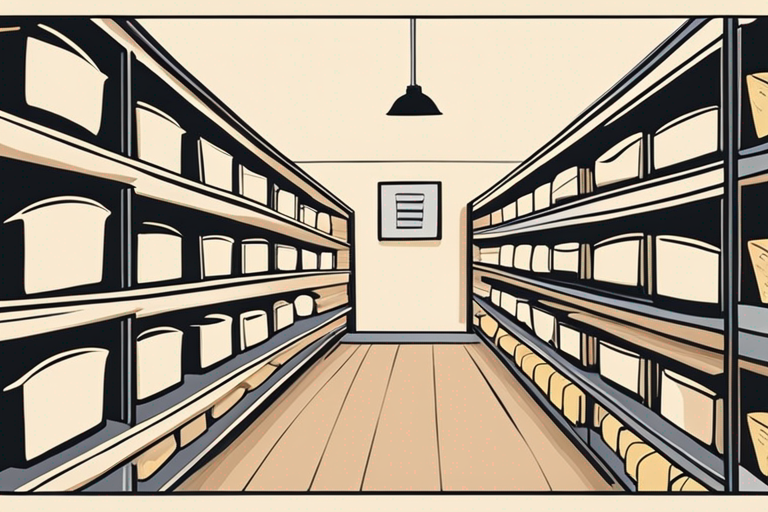
The Best Way to Store Boursault Cheese to Prevent Spoilage
Get Your Free Food Safety Cheat Sheet
30 most common foods with instant answers. Print it and stick it on your fridge—completely free!
The Best Way to Store Boursault Cheese to Prevent Spoilage
Boursault cheese is a creamy, indulgent cheese that deserves to be treated with care to maintain its quality and prevent spoilage. Proper storage is key to ensuring that this delicate cheese stays fresh and safe to eat. In this blog post, we will discuss the best practices for storing Boursault cheese to preserve its flavor and texture. (Boursault cheese)
Understanding Boursault Cheese
Before delving into storage techniques, let's first understand what Boursault cheese is. Boursault is a soft-ripened cheese with a velvety rind and a rich, creamy interior. It has a mild, buttery flavor that makes it a popular choice for cheese boards and gourmet dishes. To learn more about Boursault cheese and its culinary uses, check out our guide to Boursault cheese.
Factors Affecting Boursault Cheese Spoilage
Several factors can contribute to the spoilage of Boursault cheese if not stored properly. Understanding these factors can help you take the necessary precautions to keep your cheese fresh for longer:
- Temperature: Boursault cheese is sensitive to temperature fluctuations. Exposure to high temperatures can cause the cheese to soften and lose its shape.
- Humidity: Maintaining the right level of humidity is crucial for soft cheeses like Boursault. Too much moisture can lead to mold growth, while too little can cause the cheese to dry out.
- Light: Cheese should be stored away from direct sunlight, as UV rays can degrade the quality of the cheese.
- Air Exposure: Cheese should be protected from exposure to air, as it can lead to oxidation and off-flavors.
Best Practices for Storing Boursault Cheese
Now that we understand the factors that can impact Boursault cheese storage, let's explore the best practices for keeping this delicate cheese fresh and delicious:
1. Store in the Original Packaging
- Keep Boursault cheese in its original packaging to protect it from external contaminants and maintain the optimal humidity level.
- If the original packaging is not resealable, transfer the cheese to airtight containers or wrap it tightly in parchment paper or wax paper.
2. Choose the Right Storage Location
- Store Boursault cheese in the refrigerator, preferably in the cheese or deli drawer where the temperature is slightly warmer than the main compartment.
- Avoid storing the cheese in the door of the refrigerator, as it is subject to temperature fluctuations.
3. Maintain Proper Temperature and Humidity
- The ideal storage temperature for Boursault cheese is between 35-45°F (1-7°C). Use a refrigerator thermometer to monitor the temperature.
- Keep the humidity level around 90% to prevent the cheese from drying out. Place a damp paper towel in the storage container to maintain humidity.
4. Prevent Cross-Contamination
- Store Boursault cheese away from strong-smelling foods in the refrigerator to prevent the absorption of odors.
- Use separate containers or wrap the cheese securely to avoid cross-contamination with other foods.
5. Check for Signs of Spoilage
- Before consuming Boursault cheese, inspect it for any signs of spoilage, such as mold growth, off-putting odors, or discoloration.
- If the cheese shows any signs of spoilage, discard it immediately to avoid foodborne illness.
Conclusion
Proper storage is essential for maintaining the quality and safety of Boursault cheese. By following the tips outlined in this blog post, you can ensure that your cheese stays fresh, creamy, and delicious for as long as possible. Remember to store Boursault cheese in its original packaging, maintain the right temperature and humidity levels, and check for signs of spoilage before consuming. With the right storage techniques, you can enjoy the exquisite taste of Boursault cheese without worrying about spoilage. (Boursault cheese)

Authoritative Food Safety References
These agencies and university labs inform every tip and health precaution we publish.
USDA FoodKeeper – Cold Storage Guidelines
Official refrigerator, freezer, and pantry timelines maintained by the U.S. Department of Agriculture.
Visit USDA FoodKeeperFDA Produce Safety Rule & Grower Guidance
Field-to-fridge handling practices that prevent contamination of fruits, vegetables, and leafy greens.
Visit FDA Produce SafetyCDC Foodborne Illness Prevention Hub
Surveillance-backed guidance on pathogens, symptoms, and steps to reduce foodborne illness risk.
Visit CDC Food SafetyUC Davis Postharvest Technology Center
University research detailing optimal storage atmospheres for produce after harvest.
Visit UC Davis PostharvestPenn State Extension – Home Food Preservation & Safety
Peer-reviewed extension bulletins on safe canning, chilling, and reheating practices.
Visit Penn State ExtensionHow should I store Boursault cheese to prevent spoilage?
Can Boursault cheese be frozen for long-term storage?
How long does Boursault cheese last in the refrigerator?
Can Boursault cheese be stored at room temperature?
How can I tell if Boursault cheese has gone bad?
Get Your Free Food Safety Cheat Sheet
30 most common foods with instant answers. Print it and stick it on your fridge—completely free! Want more? Upgrade to the complete guide with 70+ foods.
Scan your food directly and get instant safety info using our AI-powered camera feature.